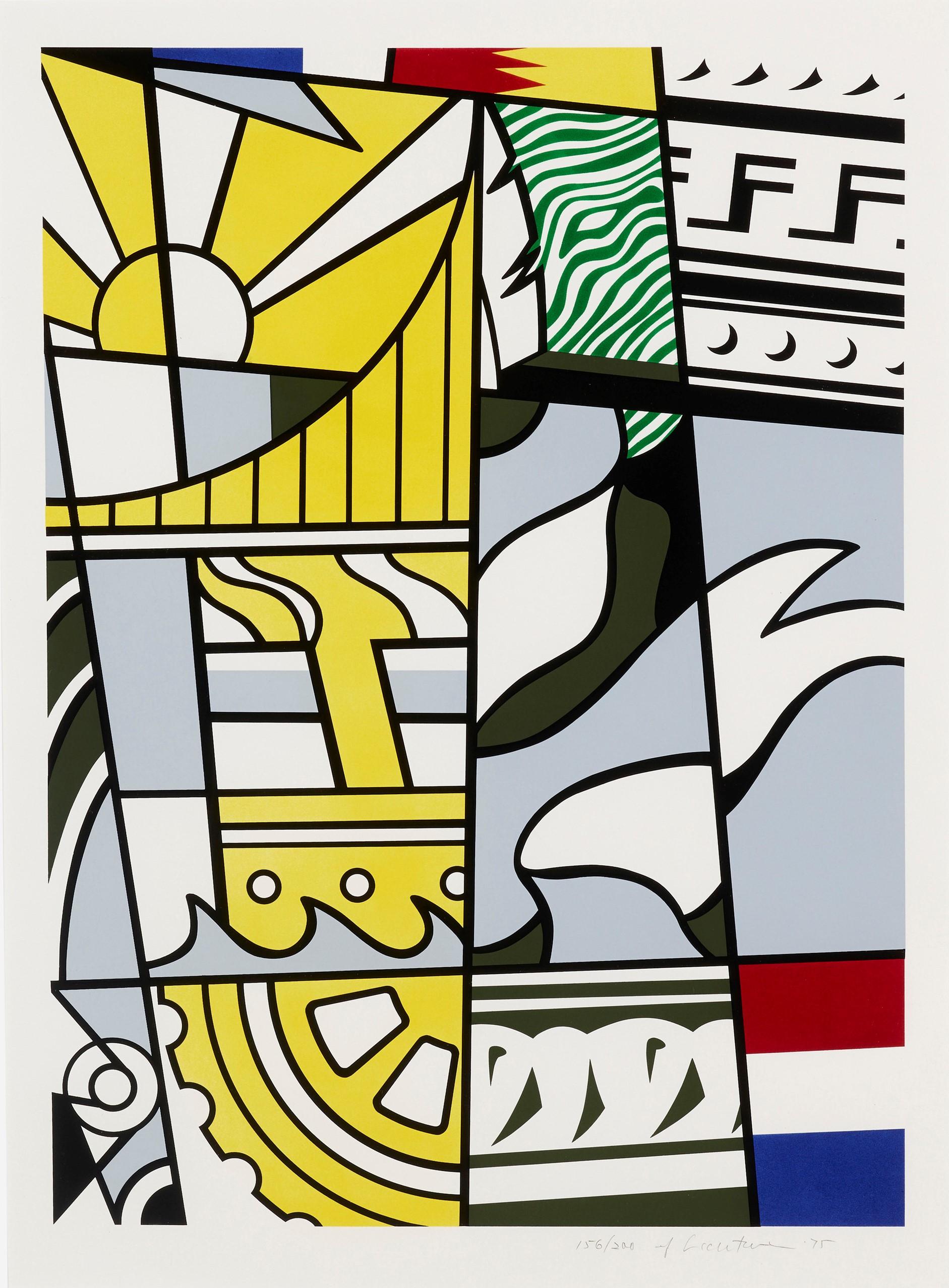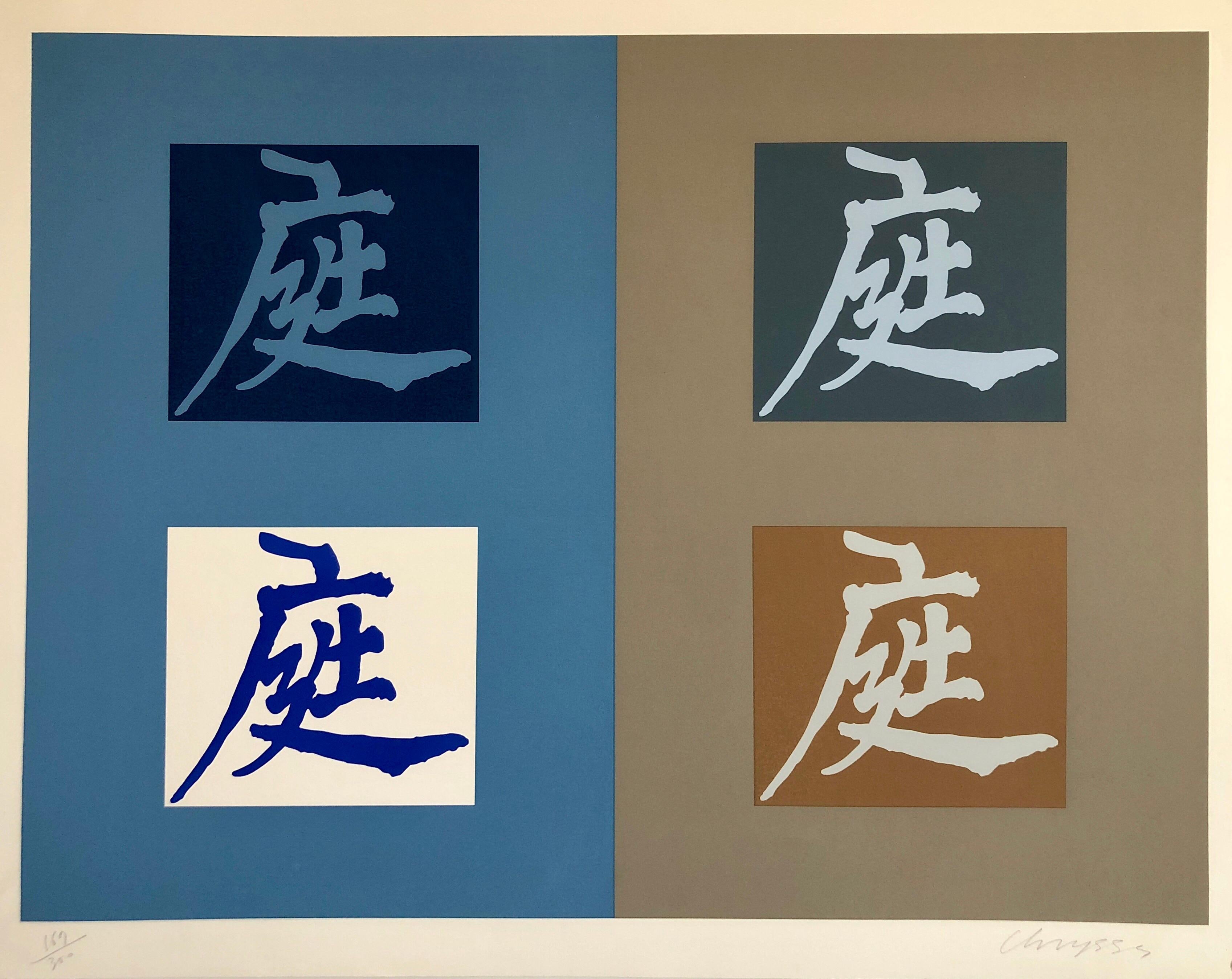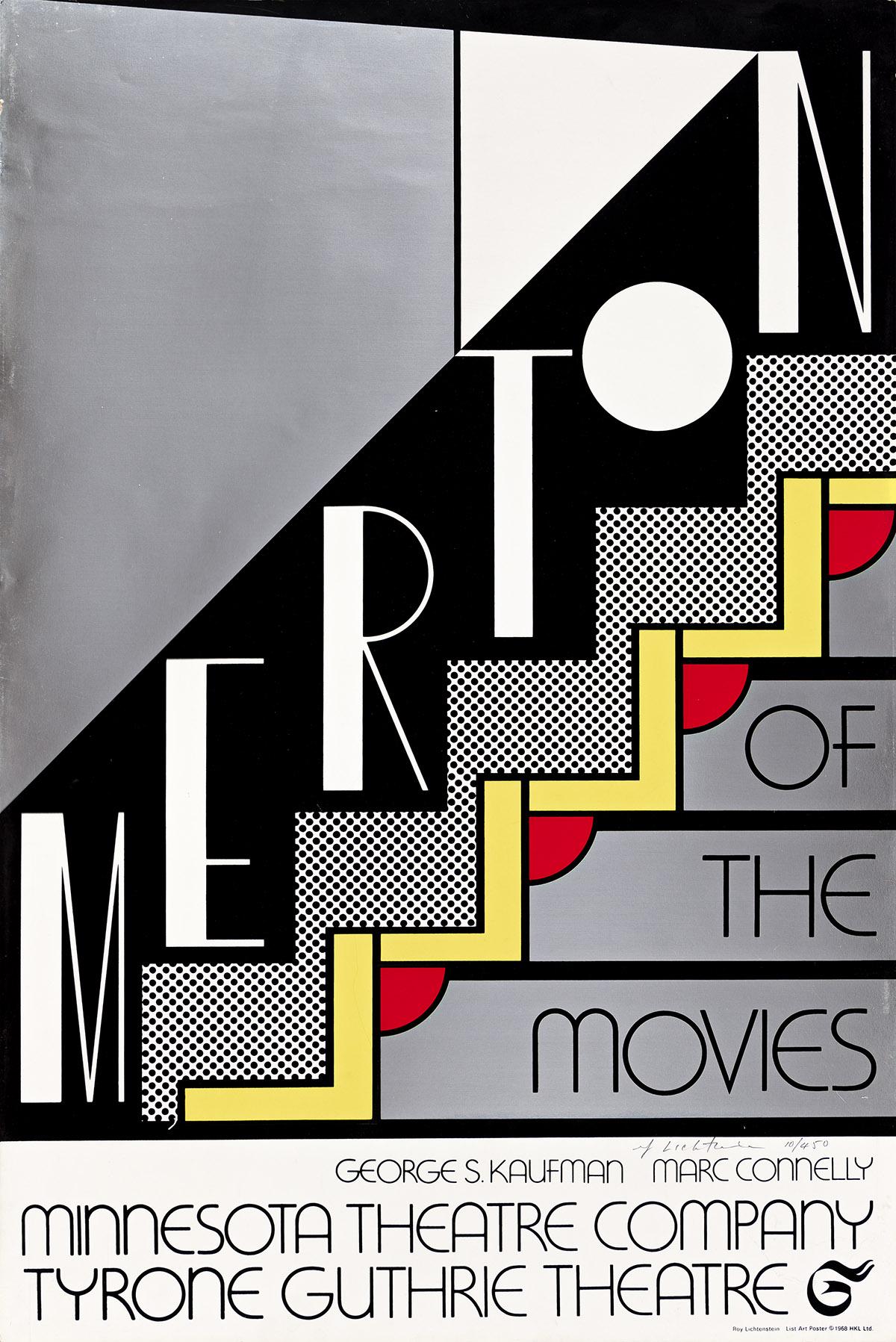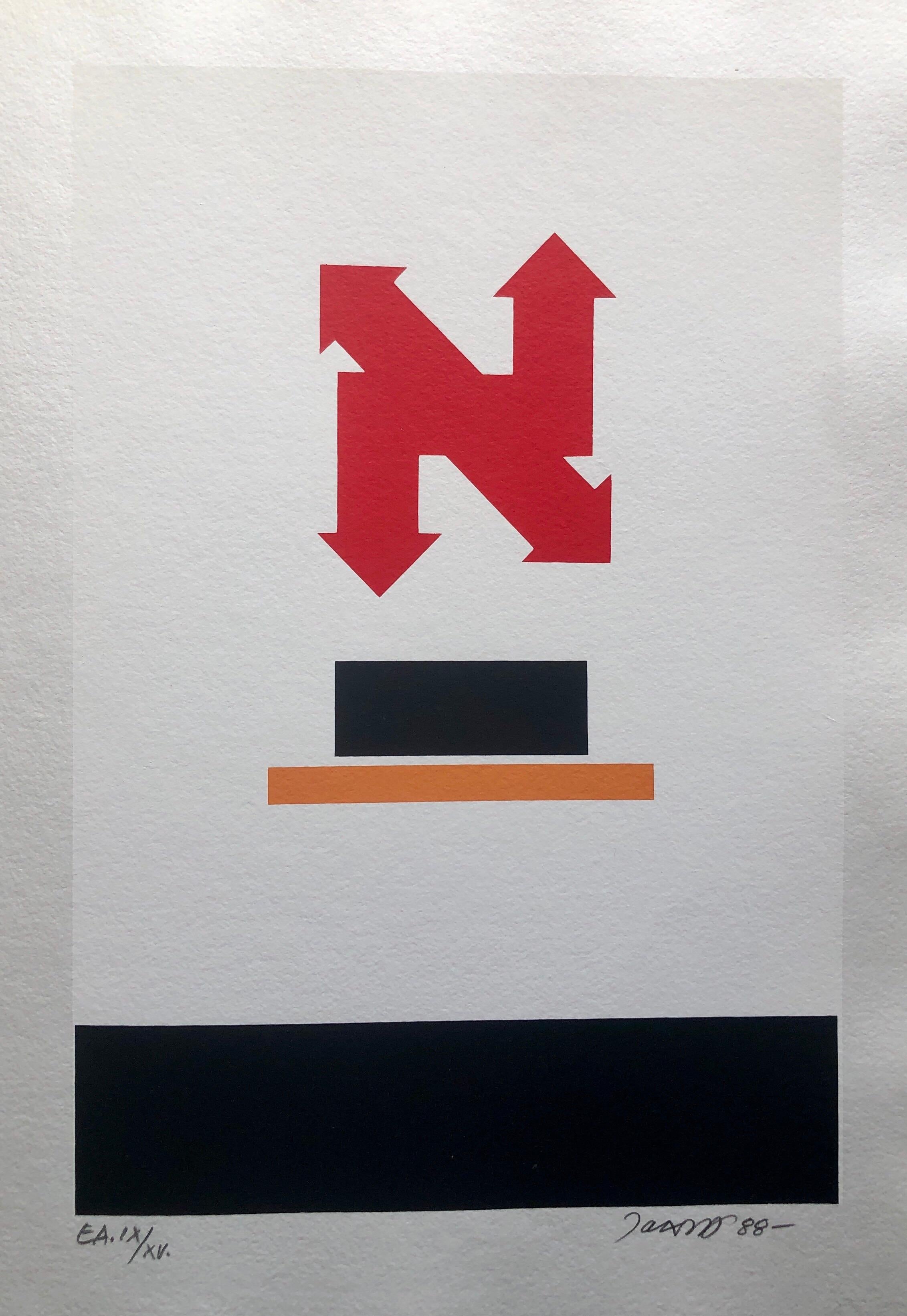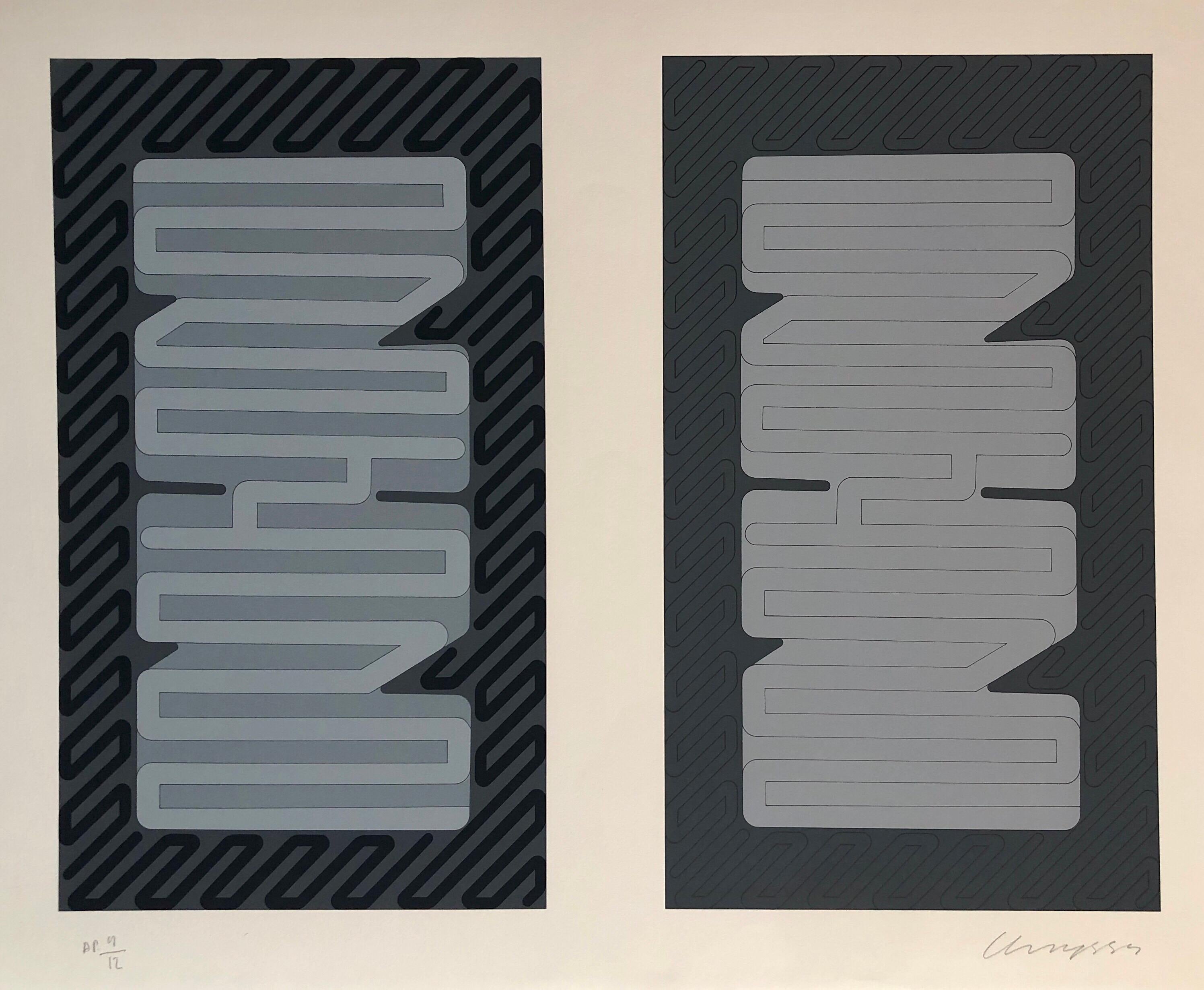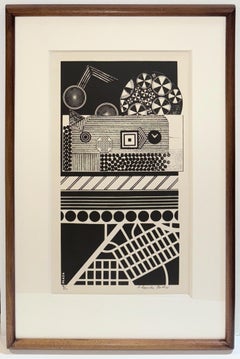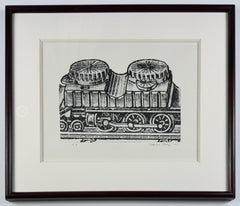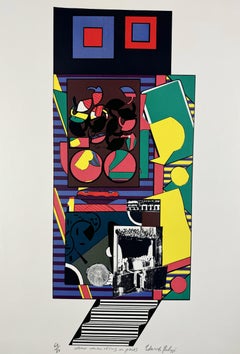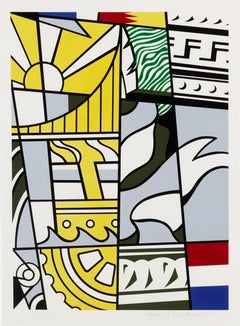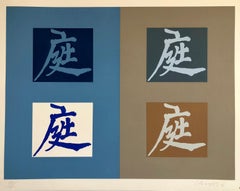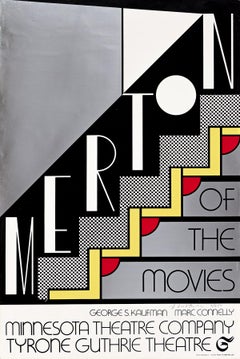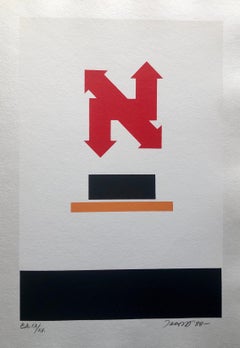James RosenquistSightseeing (black pull) James Rosenquist text Pop Art in black and white1972
1972
About the Item
- Creator:James Rosenquist (1933, American)
- Creation Year:1972
- Dimensions:Height: 27.5 in (69.85 cm)Width: 33.25 in (84.46 cm)
- Medium:
- Movement & Style:
- Period:
- Condition:
- Gallery Location:New York, NY
- Reference Number:1stDibs: LU121126306222
James Rosenquist
Although he insisted that he and his fellow Pop artists developed their art-making styles independently, American painter James Rosenquist belonged at the table with Andy Warhol and Roy Lichtenstein.
Known for his distinctive use of visual montage, Rosenquist produced large, vibrantly colored tableaux marked by fragmentation and overlap. He often employed familiar motifs and objects drawn from popular contemporary culture — hot dogs, lipstick tubes, American flags — which he manipulated to form disorienting compositions whose constituent elements are nearly unrecognizable.
Born in North Dakota to Swedish parents, Rosenquist was encouraged to pursue painting by his mother, who was also an artist. He studied painting for two years at the University of Minnesota, but dropped out at the age of 21 to attend the Art Students League in New York on a scholarship. A job as a billboard painter in the late 1950s set him up to pursue his signature style, which borrowed its bold graphics and remixed kitschy aesthetic from the visual vocabulary of advertising. Works like Flamingo Capsule (1983) embody his trademark visual dissonance, drawing cigarette-ad motifs into conversation with stripes from the American flag and aluminum foil wrappers.
In addition to enormous paintings, Rosenquist created drawings, prints and collages. The 2011 lithograph The Memory Continues but the Clock Disappears is a montage of melting clocks and confetti, all submerged in a pool of water. While wryly hinting at the inevitability of decay and deterioration — suggesting that life is a ticking clock — the composition also alludes to Salvador Dalí's signature motif, the defining symbol of Surrealism. Such compositions demonstrate how Rosenquist masterfully combined seemingly incongruous elements into a harmonious and poetic whole.
Find James Rosenquist art today on 1stDibs.
- ShippingRetrieving quote...Shipping from: New York, NY
- Return Policy
More From This Seller
View All1970s Pop Art Abstract Prints
Lithograph, Screen
1960s Pop Art Abstract Prints
Screen
1960s Pop Art Abstract Prints
Screen
1960s Pop Art Abstract Prints
Screen
1970s Pop Art More Prints
Screen
1960s Pop Art Abstract Prints
Screen
You May Also Like
20th Century Pop Art More Prints
Lithograph, Screen
1980s Pop Art Abstract Prints
Screen
1960s Pop Art Abstract Prints
Color, Screen
1980s Pop Art Abstract Prints
Archival Paper, Screen
1980s Pop Art Abstract Prints
Screen
1980s Pop Art Abstract Prints
Archival Paper, Screen
